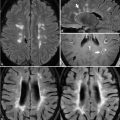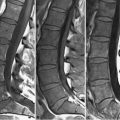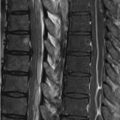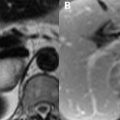65 Benign Hepatic Masses Abdominal MRI examinations typically consist of breath-hold precontrast in and out-of-phase GRE T1WI, volumetric interpolated breath-hold examination (VIBE) 3D T1WI, and HASTE T2WI in addition to STIR and postcontrast T1WI. Dynamic contrast-enhanced examinations (described below) are best performed with agents such as Gd BOPTA (gadobenate dimeglumine; MultiHance, Bracco Diagnostics, Inc., Princeton, NJ) or Gd EOB-DTPA (gadolinium ethoxybenzyl diethylenetriamine pentaacetic acid; Primovist/Eovist, Bayer Healthcare, LLC, Shawnee Mission, KS)—gadolinium chelates partially excreted through the biliary system. Other gadolinium chelates (with sole renal excretion) can be employed, but do not offer the possibility of delayed phase imaging. Hepatic cysts are the most common benign entity involving the liver and appear on T2WI as sharply demarcated, nonseptated, hyperintense lesions (FS T2WI, Fig. 65.1A). Simple cysts do not enhance on postcontrast T1WI as seen in Fig. 65.1B— a VIBE breath-hold image wherein a solitary, hypointense hepatic cyst is present. Occasionally, hemorrhage into a cyst increases its SI on T1WI, adding mucinous cysts of foregut origin—a lesion usually involving the superficial liver and expanding its margin—to the differential. Mucinous metastases may also appear similar on unenhanced imaging. Echinococcal cysts (E. granulosis) are characterized by a hypointense fibrous capsule, which may enhance. Multiple daughter cysts are classically contained within the capsule, with extrinsic cysts termed satellite lesions. Hepatic alveolar echinococcosis (E. multilocularis
![]()
Stay updated, free articles. Join our Telegram channel

Full access? Get Clinical Tree








